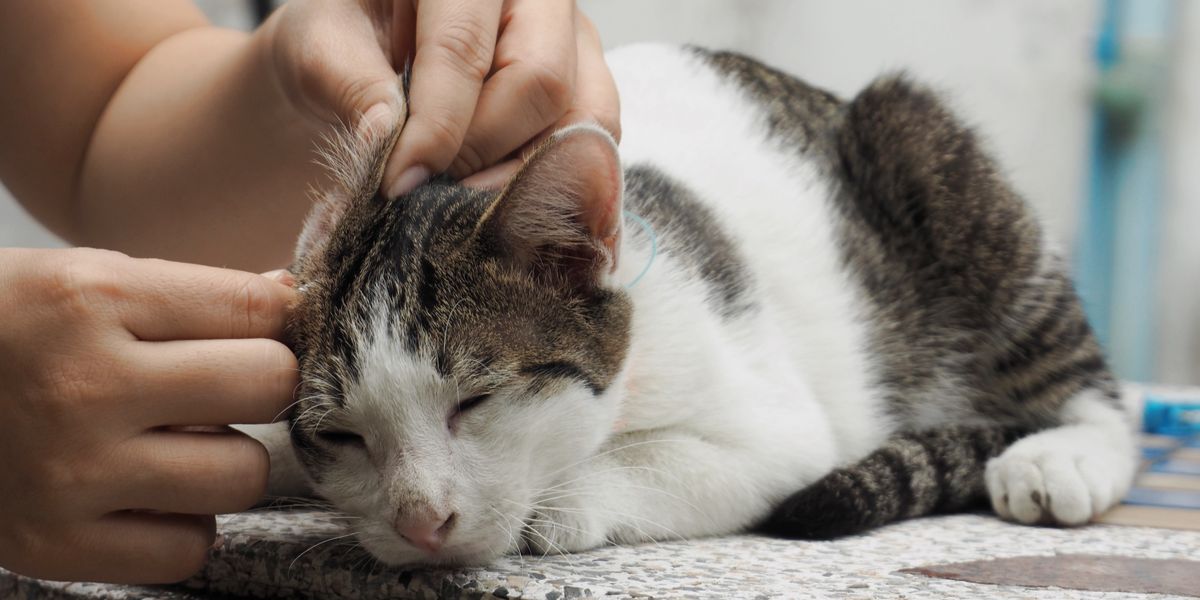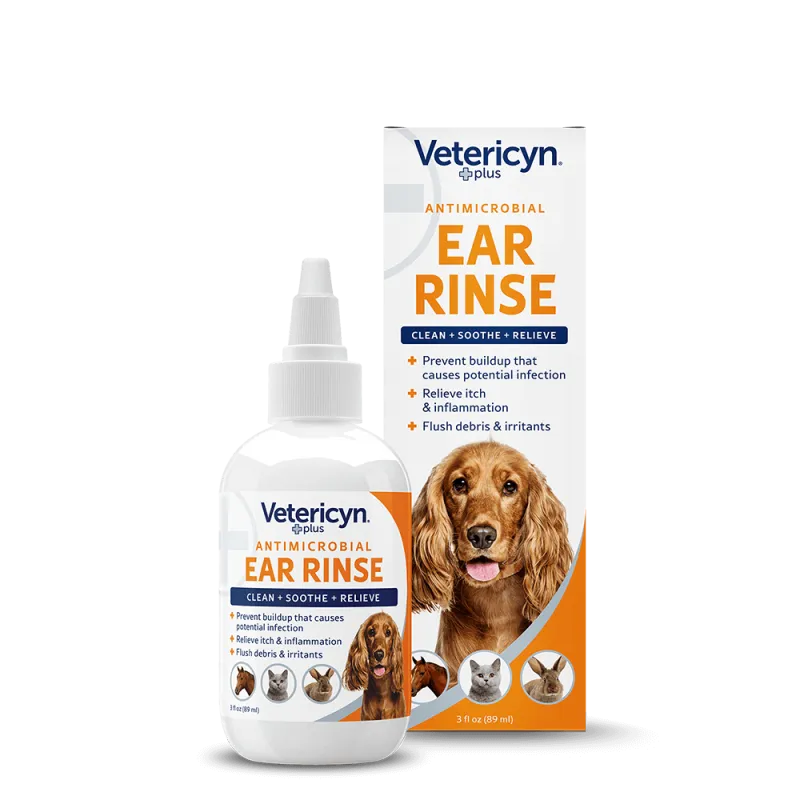Powered by Bestia Europe B.V.
Cat Losing Hair on Ears? What It Means and How to Help
Your cat’s coat is more than a fashion statement—it reflects their overall health and happiness. So when you spot a bare patch or thinning fur around those velvety ears, it’s only natural to wonder what’s behind the sudden change. Is your cat overgrooming? Could they have parasites? Or is something internal disrupting their coat health?
If you’ve found yourself Googling “why is my cat losing hair on ears,” you’re not alone—and you’re in the right place. In this guide, we’ll break down the most common reasons cats lose hair around their ears, what signs to watch for, and how to support your cat’s skin and coat health.

Is It Normal for Cats to Lose Hair on Their Ears?
Alopecia in felines, or hair loss, especially on the ears, can be alarming for pet owners. While a cat’s coat naturally changes with the season, sudden or uneven hair loss around the ears is usually a sign of underlying irritation or imbalance.1 A little thinning around the ears may not be urgent, but it’s worth paying attention to, especially if they seem persistently itchy, uncomfortable, or if your cat is scratching their ears.
A cat’s ears are particularly sensitive due to:
- Thinner skin
- Limited fur coverage
- Consistent grooming
Even subtle issues in the ear area can show up quickly as hair loss, making early detection especially important. But before you assume the worst, let’s walk through what can cause those favorite, fuzzy spots to lose fur.
Common Causes of Hair Loss on a Cat’s Ears
Hair loss around the ears is common, and thankfully, many causes are manageable. Hair loss on the ears should prompt pet owners to seek the reasons behind these bald patches. If you notice your cat losing hair on its ears, one of these reasons may be behind the bald patch:
Overgrooming and Stress
Cats are famous for their grooming habits, but when they devolve into excessive licking or serious scratching, it can lead to hair loss.2
Overgrooming often has underlying emotional triggers. Possible causes include2:
- Environmental stressors like changes at home, new pets, or loud noises
- Routine disruption, such as new litter or a change in feeding time
- Boredom from a lack of stimulation or enrichment
In some cases, cats may fixate on a particular spot (like the ears) as a way to self-soothe, which can eventually lead to a hot spot or visible hair loss. This can be especially true for indoor-only cats who may not have as many outlets for playing or exercising their natural instincts. Helping your cat de-stress through enriching activities and a consistent routine will provide relief and can reduce the likelihood of overgrooming and subsequent alopecia. A veterinarian can provide effective treatments to manage stress-driven alopecia in cats.
External Parasites (Like Mites or Fleas)
Tiny parasites can cause big problems for cats, especially in the sensitive skin around the ears. Fleas, ear mites, or mange mites can cause intense itching, prompting your pet to paw or bite at the area. Many cats also experience flea allergy dermatitis, where even a single flea bite can trigger a prolonged itch-scratch cycle.
If you suspect your cat has parasites, watch for signs like3:
- Head shaking or tilting
- Redness or scabbing near the ears
- Frequent scratching or biting around the head or neck
Because these parasites are so small, they’re often hard to spot. Your vet can determine if your cat has mites or fleas and recommend a treatment plan to manage parasite-related hair loss.
Fungal Irritation (Like Ringworm)
Despite its name, ringworm isn’t caused by a worm at all—it’s a fungal infection that’s surprisingly common in cats. Kittens or cats in a home with multiple pets are especially susceptible.4
To determine if your cat has ringworm, look for these signs around the face, paws, and ears4:
- Circular patches of hair loss
- Scaly or crusty skin
- Minor inflammation or redness
Here’s where ringworm gets tricky: It doesn’t always cause itching, which can make it difficult to diagnose at home. Your cat may appear unbothered, even as the fungus spreads.
If you have other pets or your cat recently came from a shelter or adoption agency, consider asking your vet to test for fungal infections. Keep in mind that ringworm is contagious—to other pets and humans—so early identification is key.4

Seasonal or Environmental Allergens
Just like humans, cats can react to allergens in their environment. Pollen, dust, cleaning products, or even certain foods can trigger skin sensitivity and hair loss around the ears.
Look for these clues that your cat has an allergy5:
- Itchy ears and face
- Ongoing sneezing or watery eyes
- Overgrooming their ears, paws, or other areas excessively
In some cases, cats can develop sensitivity to a specific protein source in their diet, which may show up as skin irritation around the ears. Determining and eliminating possible allergens (whether environmental or nutritional) is an important part of a broader care plan.
Hormonal Imbalance
Hormonal fluctuations (such as those related to the thyroid or adrenal glands) can also affect your cat’s coat.6 Though less common, hormonal imbalances may lead to symmetrical hair loss or changes in fur texture. Additional signs of a hormonal imbalance include7:
- Bilateral (matching) patches of hair loss
- Weight changes or shifts in energy levels
- Dry, flaky, or dull coat
Because these causes are internal, they typically require diagnostic testing by a vet to rule out more serious conditions.
How to Check Your Cat’s Ears and Coat at Home
The good news? You don’t need to be a veterinarian to ensure your cat’s ears are in tip-top shape. With a few minutes of careful attention each week, you can pinpoint potential issues early.
Add routine ear inspections into your cat’s busy schedule of napping and causing mischief—the same way you incorporate brushing, plenty of chin scratches, and play. When inspecting your cat’s ears and surrounding fur, look for8:
-
- Bald patches or thinning hair
- Redness, bumps, or flaky skin
- Scabs or scratches
- Strong or unusual odor
- Discharge in or around the ear
- Lumps or sores
But let’s be honest—most cats aren’t thrilled by surprise check-ups, even from their favorite human. Turn protests back to purrs by making these inspections a bonding moment for you and your cat. Try stroking behind your cat’s ears during cuddle time to check for changes in texture or thinning fur.
When to Schedule a Vet Visit
Mild hair thinning may resolve on its own with better grooming or stress management. But if it’s persistent, worsening, or accompanied by other symptoms, you should call in your cat’s care team.
Schedule a check-up if you notice1:
-
- Hair loss spreading beyond the ears to other parts of the body
- Red, scaly, or broken skin around the ears
- Habitual head shaking or excessive ear scratching
- Lethargy, appetite changes, or behavior shifts
Your vet may also want to rule out underlying conditions like endocrine imbalances or test for fungal or parasitic problems. Vet visits can be unpleasant for your cat, but the earlier you catch the problem, the simpler (and less costly) the treatment will likely be.
At-Home Care Tips to Support Healthy Ears and Skin
In addition to following your vet’s guidance, you can do a few things at home to support your cat’s overall skin and coat health9:
- Practice regular grooming – Gently brushing your cat removes loose fur and distributes natural oils evenly, supporting a healthy coat.
- Keep those cute ears clean – Use a gentle, non-irritating cleanser likeVetericyn Plus® Antimicrobial Ear Rinse to help flush out debris and maintain ear hygiene.
- Minimize environmental stressors – Create consistent meal and play routines for your cat to reduce anxiety-related grooming behaviors.
- Support overall health – Speak to your vet about high-quality nutrition or supplements to ease cat skin allergies and promote coat wellness.
- Watch the weather – Your cat’s coat may be responding to seasonal shifts. Cold, dry air can cause skin dryness, while hot, humid air may encourage parasites or fungal growth. Adjust care as needed when the weather changes.
Can Hair Grow Back After Loss? What to Expect
In many cases, yes. Once the underlying issue is addressed, the fur around your cat’s ears will begin to regrow over time.10 That said, the timeline depends on the cause and severity of the hair loss, as well as your cat’s age and overall health. Consult with a veterinarian to treat the underlying cause effectively and promote regrowth of your cat’s coat.
Healthy regrowth might look like10:
- Soft stubble around the affected area within a few weeks
- Full regrowth within 1–3 months
Just like humans, your cat may need a little extra TLC to get back to full fluff. Be patient and follow any vet-recommended care plan.

Preventing Future Hair Loss on Cat Ears
Once your cat’s coat is back to its silky best, you’ll want to keep it that way. These simple at-home practices can prevent repeat hair loss11:
- Perform weekly coat checks to catch early signs of ear trouble.
- Use ear-safe cleaners, especially after outdoor adventures or multi-pet playtime.
- Stay up to date with parasite prevention using vet-approved products.
- Manage stress with toys, scratching posts, and a cozy hiding spot.
When prevention becomes part of your routine, you’ll be better prepared to catch minor ear issues before they become major concerns for you and your cat. Check out our full line of cat care products designed to support healthy skin, ears, and coats.
Refine by

Vetericyn Plus All Animal Ear Rinse
Vetericyn Plus All Animal Ear Rinse
Remove unwanted substances. Relieves itching and irritation. Cleanses ears and removes odor.
€13,18
Veterinarian Formula

Otic Care
Otic Care
Discover Vetericyn Plus VF Ophthalmic Wash: the most powerful solution for animal eye care and irritations.
€16,49
Free Shipping

Vetericyn Small Animal First Aid Kit
Vetericyn Small Animal First Aid Kit
Complete First Aid kit for treating localized problems that lie on the skin.
was €52,73
Save 11%
€47,07
Display prices in:EUR
